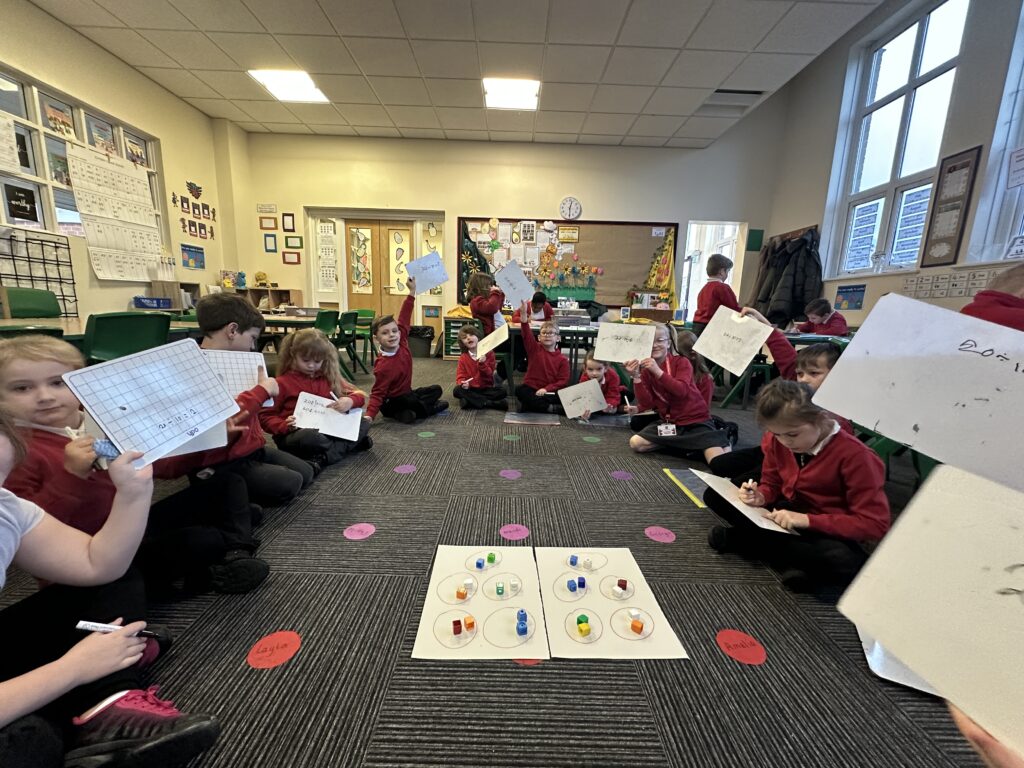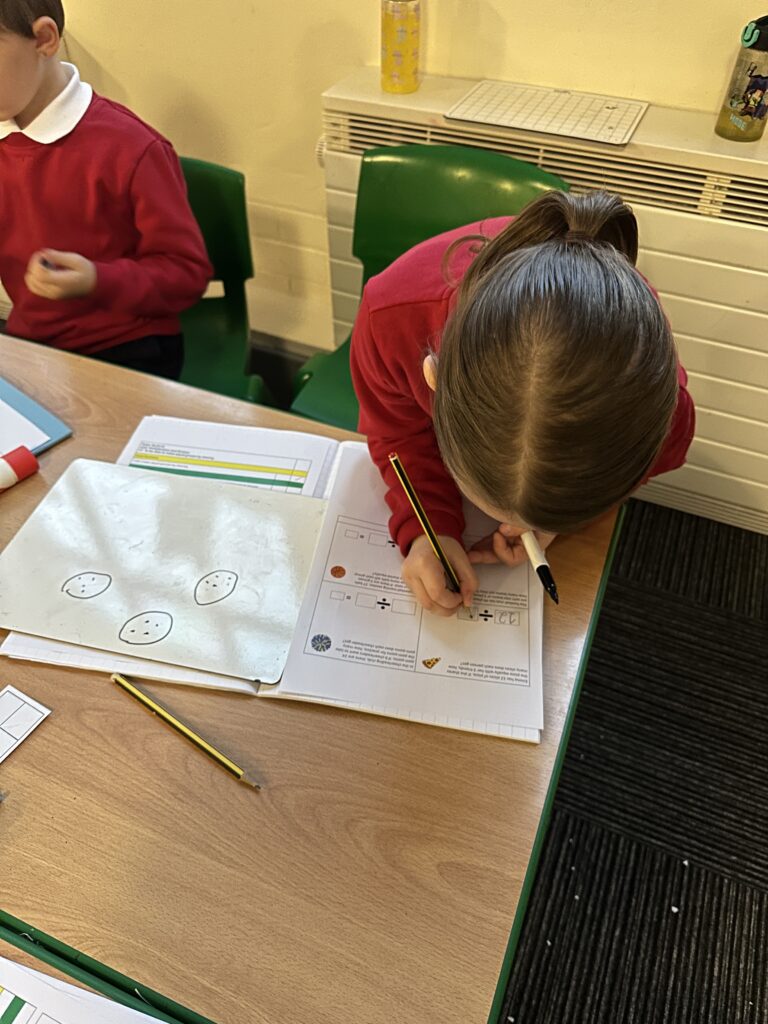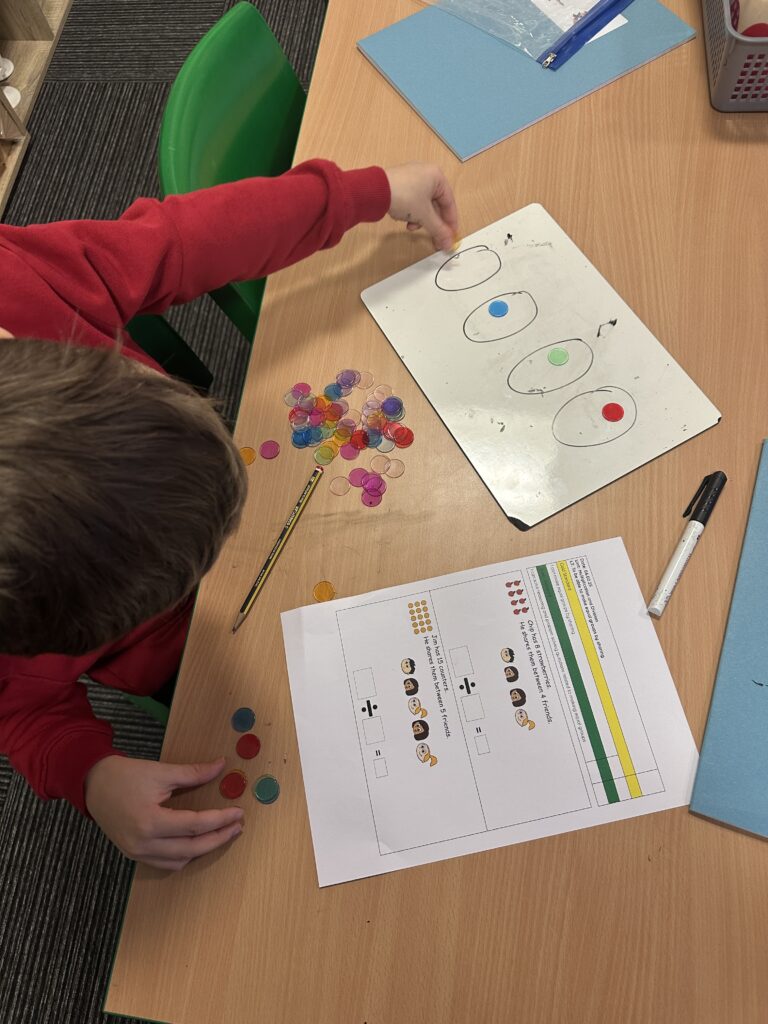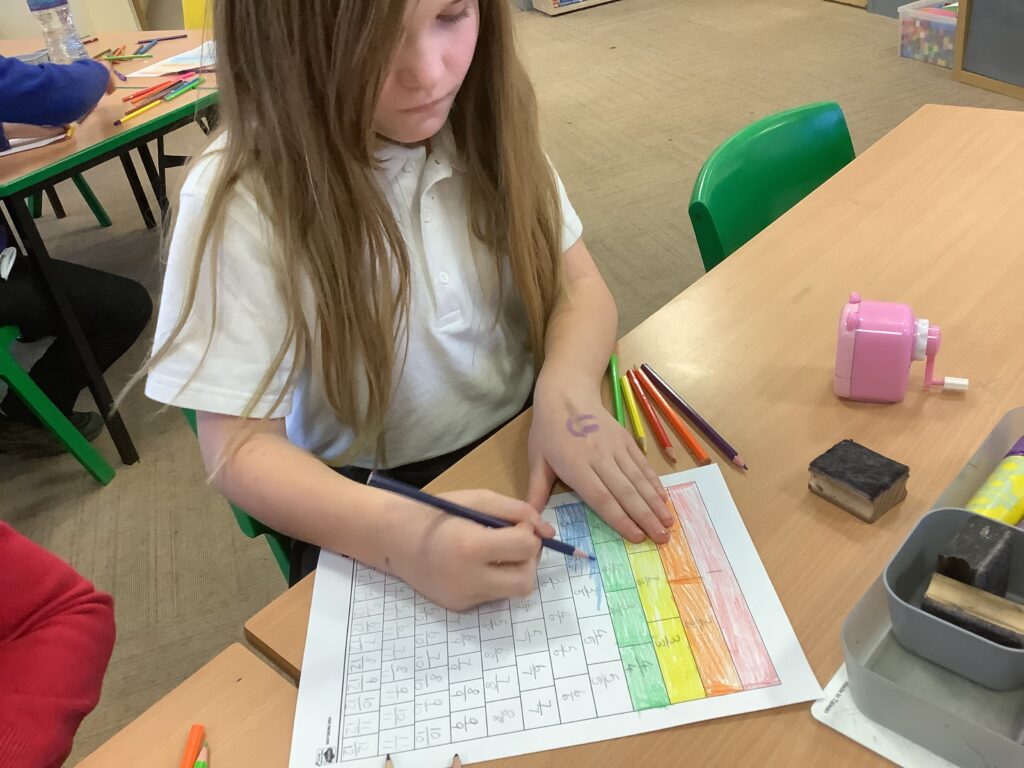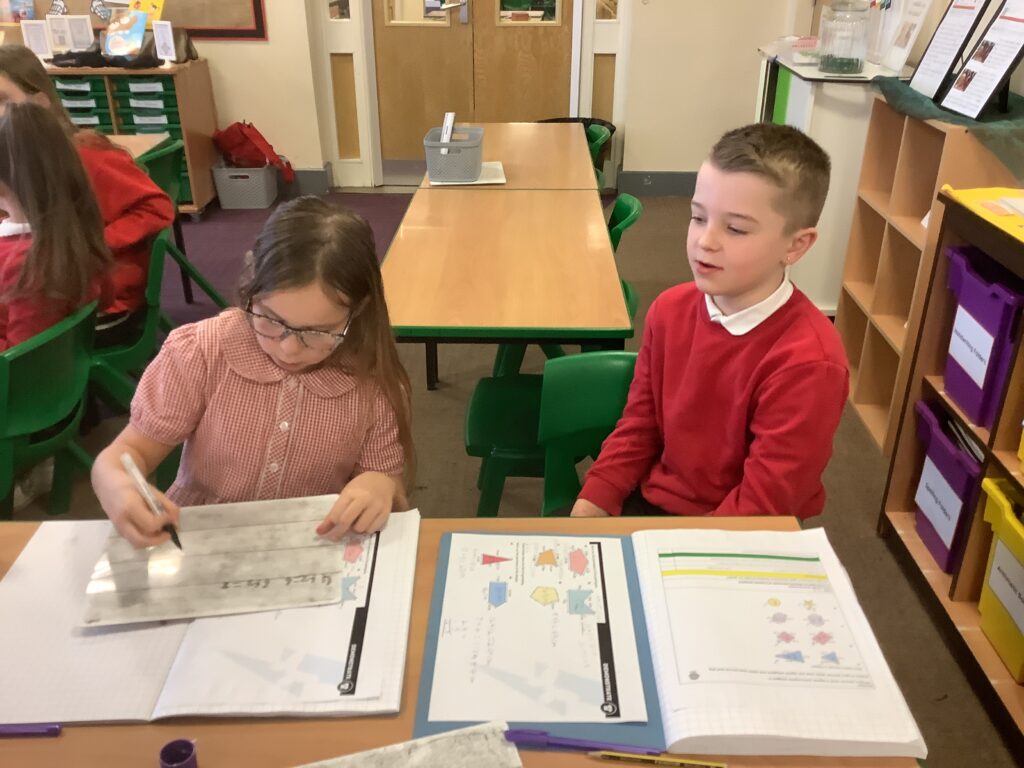We have been looking at repeating patterns and what the word ‘repeating’ means. We talked about how it is the same thing again, and again, and again. We started by chanting each of the colours in the pattern, which helped us to continue the pattern – even without the pictures on the board to help us! We then had to work together to see if we could find out what colour would come next in the pattern.
To demonstrate our learning, we then had an individual pattern that we then had to complete with the correct picture. We were really kind to our friends and if we noticed that they had made a mistake we helped them to correct it.



